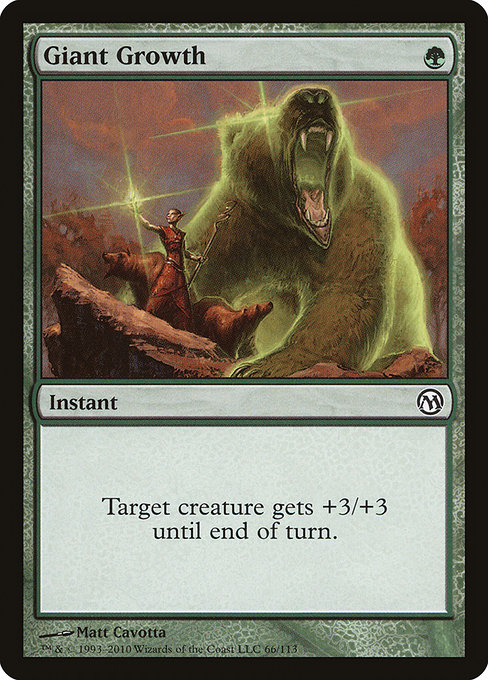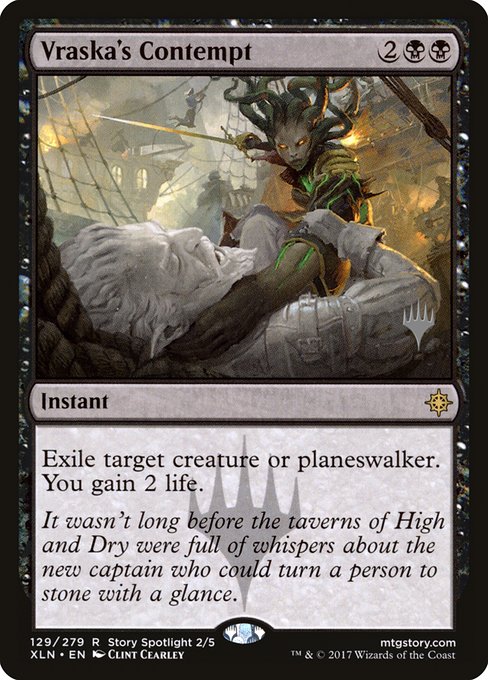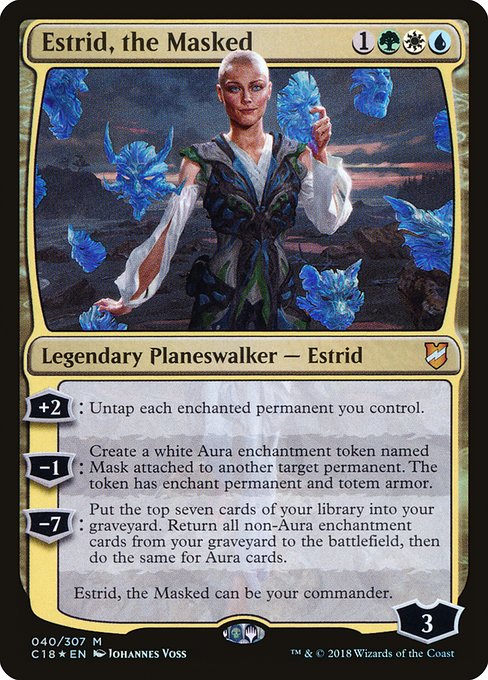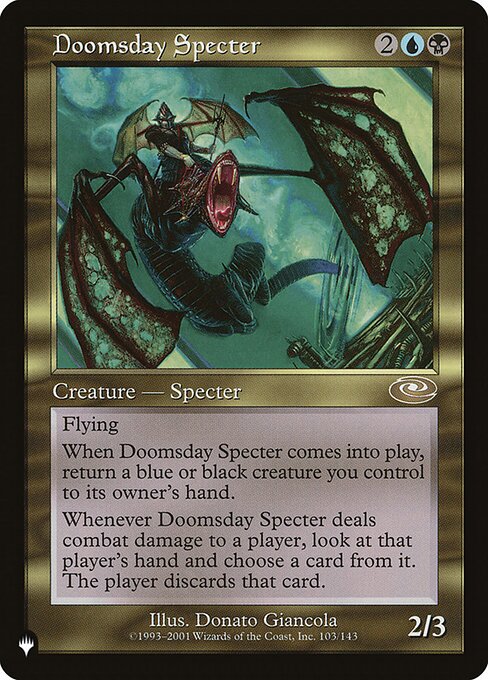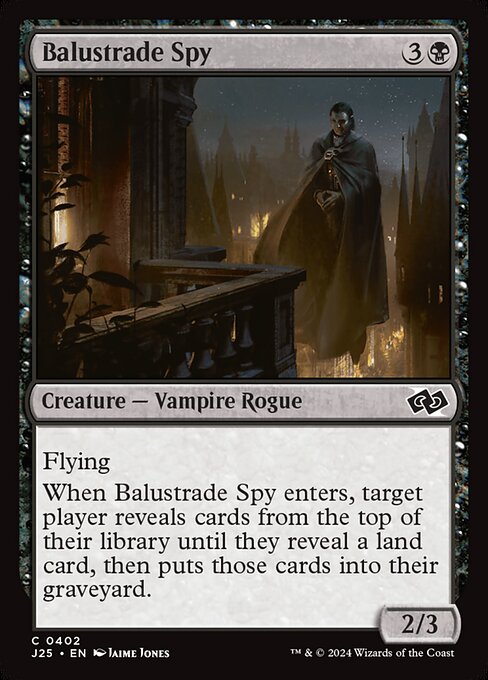
Balustrade Spy

Guide Sections
Strategy Guide
Last updated 2025-07-06Quick Summary
Balustrade Spy is a 2/3 black Vampire Rogue creature with flying. Its most significant ability triggers upon entering the battlefield: it forces a target player to reveal cards from the top of their library until a land card is revealed. All cards revealed in this process, including the land card, are then put into that player's graveyard. This means Balustrade Spy can disrupt an opponent's strategy by potentially removing key cards like Lightning Bolt, Counterspell, or crucial creatures before they can be played, depending on the order of cards in their deck.
The targeting of the "target player" is crucial; it is not an effect that affects all opponents. You choose a single opponent when the ability resolves. The player whose library is being searched has no agency in the process – they must reveal cards until a land is revealed, even if it takes many cards. If the targeted player's library is empty, the ability will have no effect, as there will be no cards to reveal.
There are no direct interactions with other cards that specifically modify Balustrade Spy's triggered ability. However, effects that prevent cards from being put into graveyards, such as Scavenging Ooze's ability, will not prevent the initial reveal portion of the effect. The revealed cards will still be exiled if something prevents them from going to the graveyard (as opposed to revealed then put into the graveyard). However, cards that shuffle the library such as Sylvan Library or Windfall will not interfere with the resolution of the effect, as Balustrade Spy’s ability resolves before any subsequent effects on the library. Consider that the Balustrade Spy ability could be affected by effects that manipulate the top card of an opponent’s library like Mystic Remora.
Balustrade Spy's strategic application hinges on its ability to disrupt opponents' draws and generate card advantage, albeit asymmetrically. Its low cost makes it surprisingly efficient at accomplishing this, particularly in decks that can leverage the information gained from seeing their opponent's revealed cards or benefit from the opponent's graveyard being stocked with useful spells.
The "reveal until land" clause makes it significantly more reliable than simply milling a set number of cards. This means Balustrade Spy is more consistent at achieving its primary goal: setting up an opponent for a less-than-ideal draw. This is invaluable against decks that rely heavily on specific card draws to execute their game plan, like combo decks relying on specific pieces, or control decks needing answers at the right moment. The immediate disruption is a potent effect.
Several archetypes can effectively utilize Balustrade Spy. Aggressive black decks, for example, can use it to accelerate their game plan by thinning the opponent's deck of key cards while simultaneously applying pressure with a 2/3 flyer. Similarly, midrange black decks that use cards like Vampire Nocturnus or Bloodline Keeper can utilize the revealed cards as potential fuel for these synergies.
Furthermore, decks built around graveyard strategies can benefit indirectly. While not strictly a graveyard enabler, Balustrade Spy populates the opponent's graveyard, setting up potential opportunities for cards that interact with it. This can be particularly effective against decks that might try to utilize graveyard hate to shut down your own strategies, as they may inadvertently be providing you with fuel.
In short, Balustrade Spy functions as a disruptive threat and tempo card. It shines in decks that can leverage the information it generates or are less reliant on consistent top-deck draws themselves. Its flexibility makes it a strong inclusion in various black-based strategies.
Balustrade Spy's design revolves around disrupting opponents' draws and leveraging the graveyard. Its low mana cost and flying ability make it a surprisingly efficient tempo play in the early game. The key to maximizing its effectiveness lies in building a deck that benefits from filling the opponent's graveyard or leveraging the cards revealed.
Ideally, you want to include cards that benefit from opponents milling themselves. Bloodline Keeper thrives on a larger graveyard, potentially gaining significant power boosts from the cards Balustrade Spy sends to the graveyard. Similarly, Strefan, Vampire Overlord can grow larger with each creature put into an opponent's graveyard. If you are focused on graveyard strategies, Gonti, Lord of Luxury offers a powerful means to steal valuable cards from the graveyard.
Strategies that benefit from knowing your opponent's upcoming cards are also synergistic. Cards like Psychic Possession or Knowledge Exploitation allow you to exploit information gained by revealing cards with Balustrade Spy. You could also incorporate cards that benefit from knowing which lands your opponent has in their hand, such as Thoughtseize.
While not directly synergistic, efficient removal spells are crucial. Cards like Murder and Doom Blade can remove threats that your opponent might draw or hold in hand once you use Balustrade Spy to discover what they are drawing. This allows you to proactively adjust your strategy.
Finally, considering the Spy's vulnerability, consider including protection in the form of evasion or counterspells. Counterspell can protect the Spy itself and Swiftfoot Boots offers a crucial layer of protection from removal spells. Alternatively, building a strategy around sacrificing the Spy can generate value in the late game with sacrifice engines like Blood Artist or Zulaport Cutthroat.
Balustrade Spy's viability is heavily format-dependent, owing to its narrow but potent effect. Its power lies in disrupting opponents' draws and potentially setting up powerful graveyard synergies, but its fragility limits its effectiveness in certain metagames.
In Standard, Balustrade Spy faces an uphill battle. While the ability to disrupt an opponent's draws can be impactful, its 2/3 body is easily removed by many common removal spells like Fatal Push and Lightning Bolt. The lack of inherent synergy with other Standard archetypes further hinders its inclusion. It's unlikely to see play unless a specific graveyard-focused archetype emerges that can leverage its ability effectively.
Historic presents a slightly more favorable environment. While removal remains a threat, the wider card pool offers more opportunities for graveyard strategies. It might find a home in a dedicated graveyard shell utilizing cards like The Underworld Cookbook or Kroxa, Titan of Death's Hunger , but even here, its fragility remains a significant drawback. Its effectiveness depends heavily on the metagame and the prevalence of decks vulnerable to graveyard disruption.
Commander offers the most potential for Balustrade Spy. Its ability to consistently disrupt opponents' mana development is a potent effect in a format where games often stretch over many turns. The higher life totals and more diverse strategies in Commander make it less vulnerable to simply being removed quickly. Decks built around graveyard strategies or those looking to leverage card draw disruption will find Balustrade Spy a useful tool. Its synergy with cards like Yawgmoth, Thrashing Wurm and Liliana, Heretical Healer showcases its potential in various Commander builds. However, it is unlikely to be a centerpiece but rather a strong supporting card in various strategies.
Balustrade Spy excels in disrupting opponents' strategies, particularly when they rely on specific card draws or have a limited number of lands in their deck. One impactful scenario involves facing a player heavily reliant on Collected Company or similar strategies. If they have only a few lands in their opening hand and several creatures in their library, Balustrade Spy can force them to discard crucial creatures before they can utilize their powerful spell. This leaves them vulnerable and behind on board presence.
Another scenario is against a deck that is trying to ramp into powerful late-game plays. For example, if your opponent has multiple ramp spells, such as Cultivate and Rampant Growth, in their hand, but their land count is low, playing Balustrade Spy can significantly delay their game plan. By removing crucial land cards and disrupting their ramp strategy, the Spy allows you to establish a more favorable board state early. Even if they manage to find more lands eventually, the delay buys you valuable time and could potentially swing the game in your favor.
Finally, Balustrade Spy can be extremely effective in combination with graveyard-based strategies. By forcing your opponent to mill a significant portion of their deck, you're not only disrupting their game plan but also potentially setting up powerful synergies. For instance, if you're playing a Bloodghast or Strix, the cards milled by Balustrade Spy could provide valuable additions to your own battlefield.
Balustrade Spy, a common Vampire Rogue from the Jumpstart 2022 (j25) set, represents a unique approach to disruption at its mana cost. Its ability to force a player to mill until a land is revealed provides a potent, if somewhat unpredictable, effect. Unlike many other forms of disruption, Balustrade Spy's impact isn't solely about denying resources; it also acts as a form of information gathering, allowing the player to glimpse their opponent's hand strategy to some degree. This makes it a versatile card that could find a place in various casual and budget-oriented black decks.
The card itself is relatively straightforward in its design, making it easy to understand and integrate into a deck. There have been no reprints of Balustrade Spy as of yet, making its appearance in Jumpstart 2022 its only readily available printing. This rarity could potentially increase its value among collectors or players seeking specific cards from that set in the future. Compared to other common disruption tools like Thoughtseize or Inquisition of Kozilek, Balustrade Spy operates on a different axis. While the aforementioned cards directly remove cards from the opponent's hand, Balustrade Spy indirectly impacts their hand development by potentially removing key spells before they can be cast. Its impact, therefore, is more akin to cards like Bloodghast which can indirectly benefit from a graveyard full of lands. The fluctuating nature of the milling makes its effectiveness dependent on luck to some extent, but the ability to gain information partially mitigates that randomness. This unpredictable element could either severely hinder the opponent or be largely irrelevant, lending itself to a more chaotic, swingy style of play.
Balustrade Spy's flavor text perfectly captures the sneaky, information-gathering nature of a vampire rogue. The art depicts a shadowy figure, blending seamlessly with the night, reinforcing this clandestine role. The flying ability adds to the feeling of unseen surveillance, perfectly complementing the "spy" aspect of its name. The effect of forcing a player to reveal cards from their library until a land is found hints at a more insidious form of espionage, going beyond simple observation to actively disrupting their strategy.
The design is elegant in its simplicity. The cost of {3}{B} fits a common creature with evasion and a disruptive ability. The 2/3 statline is appropriately fragile for a creature that relies on its ability rather than direct combat. This makes it a tempo play, forcing the opponent to lose cards or potentially mana ramp while putting a threat on the board – similar to how Wrenn and Six impacts a game. However, unlike Wrenn, Balustrade Spy is less of a value engine and more of a disruptive tempo piece. Its synergy with other black cards that benefit from graveyard interaction, such as Liliana's Standard Bearer or discard spells, makes it a strong addition to various black-based strategies in the set. Within the Commander format, it could also be a powerful inclusion in decks built around library manipulation or graveyard recursion. The card fits well within the overall theme of Jumpstart 2025 which often focuses on smaller, impactful effects that quickly shape the early game, even if that disruption is less immediately impactful than Bloodchief’s Thirst.
The Balustrade Spy's mana cost of {3}{B} places it in the mid-range of budget-friendly options. While not exceptionally cheap, it's not prohibitively expensive either. Many common and uncommon creatures cost similarly or more. Its impact on the game, however, may justify its cost depending on the deck's strategy. The ability to disrupt an opponent's hand by revealing cards and putting them into the graveyard can be significant, particularly in formats where consistent mana is crucial.
Cheaper alternatives exist, but often lack the disruptive element of Balustrade Spy. Cards like Vampire Neonate are significantly cheaper, at {1}{B}, but lack the powerful card-reveal and graveyard-disruption ability. Other inexpensive fliers might offer similar stats for a cheaper cost, but won't offer the same level of strategic advantage. Whether a cheaper alternative is truly better depends heavily on the specific deck's needs and playstyle. If consistent disruption is a priority, then the small extra cost of the Balustrade Spy might be worthwhile. However, if pure creature stats and cheap casting cost are the most important factors, then certainly cheaper options are readily available.
Balustrade Spy's seemingly straightforward effect opens doors to several nuanced strategies. Its ability to manipulate an opponent's library isn't limited to simply disrupting their mana development. By forcing the opponent to discard cards before they can play them, you effectively deny them key spells or creatures, especially if they have a hand full of expensive cards that cannot be cast immediately. This is particularly effective against decks relying on specific high-mana-cost cards that are crucial for their gameplan. For example, against a Torpor Orb deck that is relying on specific high-cost threats, this can delay their strategy considerably.
Furthermore, the cards revealed and subsequently discarded by Balustrade Spy aren't simply lost. This milling effect can be quite useful in combination with graveyard-centric strategies. Decks utilizing Grisly Salvage or Dread Return can leverage the cards milled by Balustrade Spy to bring back powerful creatures or other spells from their opponent's graveyard, turning their discarded resources into your own potent advantage. This synergistic play creates an additional layer of complexity not immediately apparent.
Consider also the information gained from revealing an opponent's top cards. Even if no immediately impactful cards are milled, you gain valuable insight into their hand and future strategy. This intel can influence your subsequent plays, enabling more informed decisions regarding your own spells and creature deployments. This makes Balustrade Spy an excellent tool for a control or midrange strategy where understanding the opponent's strategy is paramount.
A common mistake with Balustrade Spy is misjudging the timing of its triggered ability. Players sometimes forget that the ability triggers when the creature enters the battlefield, not when it's declared as a creature that's attacking or blocking. This can lead to wasted opportunities, especially if Balustrade Spy is removed before the ability resolves.
Another frequent error is neglecting to consider the opponent's deck composition. Against an opponent with a very low land count, or one running a deck with significant ramp, Balustrade Spy might only mill a few cards, making it a less impactful play. Conversely, against a deck packed with lands, it can be exceptionally disruptive. Players often fail to assess this risk/reward before casting Balustrade Spy.
Finally, players sometimes overlook strategic considerations beyond simply milling cards. While the primary purpose is disruption, the milled cards can reveal information about the opponent's strategy (e.g., revealing key combo pieces like Demonic Tutor or important threats), which can inform later gameplay decisions. Ignoring this intelligence gathering aspect can diminish the overall effectiveness of Balustrade Spy.
Balustrade Spy offers a potent combination of evasion and disruption for its relatively low mana cost of {3}{B}. Its flying ability allows it to pressure opponents' life totals while its enters-the-battlefield ability acts as a form of targeted graveyard hate and potential tempo advantage. By forcing a player to reveal cards from the top of their library, Balustrade Spy can disrupt their mana development or reveal key cards, potentially setting them back a turn or more. This makes it a strong inclusion in aggressive black decks seeking to gain an early advantage, particularly those that benefit from having opponents' cards in the graveyard, such as Bloodghast or Reanimate strategies. However, the effect is heavily reliant on the opponent's deck composition; if they are heavily reliant on non-land spells, the effect will be less impactful. Therefore, Balustrade Spy is best played in situations where you need immediate tempo advantage, and it shines against opponents likely to have a high land density in their opening hand and early draws.
